Genetic therapies are changing how we treat—and even prevent—diseases.

Doctors at Phoenix Children’s are at the forefront of a new era in medicine.

Genetic therapies are changing how we treat—and even prevent—diseases.

Doctors at Phoenix Children’s are at the forefront of a new era in medicine.
6 4 7 18 19
The Insider
Updates from around Phoenix Children’s.
Keeping the Dream of Parenthood Alive
A cutting-edge procedure gave Jacob something priceless: the possibility of becoming a dad one day.
A New Chapter Begins
From innovation to compassion, new President and CEO John Nickens shares what inspires him—and where he sees Phoenix Children’s headed next.
School, Reinvented for Healing
Hospital stays interrupt a lot of things—but thanks to 1 Darn Cool School, kids don’t have to miss the moments that shape who they are.
Common Cause
Recent and upcoming events supporting Phoenix Children’s patients and their families.

8

6
8
Breaking the Code
Genetic therapies are changing how we treat— and even prevent—diseases. These doctors at Phoenix Children’s are at the forefront of a new era in medicine.

18
Enduring Endowments
You can’t always predict a breakthrough. But you can help create the moments that lead to one. At Phoenix Children’s, endowments shape the future of pediatric care—starting today. 14
PHOENIX CHILDREN’S FOUNDATION BOARD MEMBERS
CHAIR
Mike Bill MJ Companies
VICE CHAIR / SECRETARY / TREASURER
Taylor Burke Rainy Partners
PHOENIX CHILDREN’S PRESIDENT AND CEO
John R. Nickens
PHOENIX CHILDREN’S CHIEF DEVELOPMENT OFFICER, FOUNDATION
Steven S. Schnall
Alexa Schneider J.C. Pace, Ltd.
Scott Bindley Screenwriter
EMERITUS
Larry Clemmensen Community Volunteer
Ahron Cohen Polar Sun Ventures
EMERITUS
Kevin Czerwinski Merit Partners, Inc.
Shane Doan Toronto Maple Leafs
Ed Grant
Scottsdale Investment Management
Lisa Graziosi Extension Bar
Tarl J. Robinson Plexus Worldwide
J. Paul Rhodes Community Volunteer
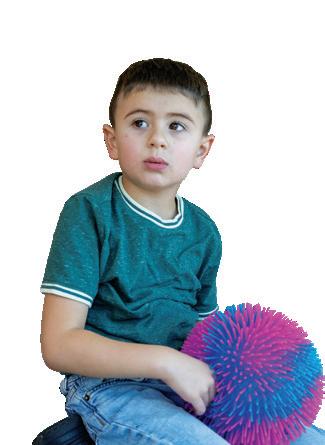
At Phoenix Children’s, we’re always looking forward—to the next breakthrough, the next discovery, the next moment that will change a child’s life.
Today, we’re in the thick of some of the most exciting and promising work in our history. Our physician-scientists are leading clinical trials that could transform treatment for Duchenne muscular dystrophy, epilepsy and rare neurodevelopmental disorders—moments of progress today that hold the potential to transform the care of tomorrow
As we look ahead, we’re also pleased to welcome our new President and CEO, John R. Nickens IV, who recently assumed the role following the retirement of longtime President and CEO Robert L. Meyer. John’s leadership, vision and deep commitment to children’s health will advance Phoenix Children’s into a promising new chapter. Get to know John on page 7.
These advances are the result of bold vision, relentless determination and the support of donors like you. Your generosity helps make these moments possible—moments when a parent feels hope again, when a physician sees a therapy working, when a child’s life takes a different path because of something we did together.
That’s the power of philanthropy. That’s the power of believing in what comes next.
As you read the stories in this issue of Moments, I hope you feel proud of all we’ve accomplished together—and energized by what’s ahead. The future of children’s health is being shaped right now, and your support is helping lead the way. For that, I thank you for standing by us in our mission to provide world-class care to every child who needs it.
Together, we can create moments today that reimagine the pediatric care of tomorrow for the better.
Sincerely,
STEVE SCHNALL Senior Vice President
&
Chief Development Officer
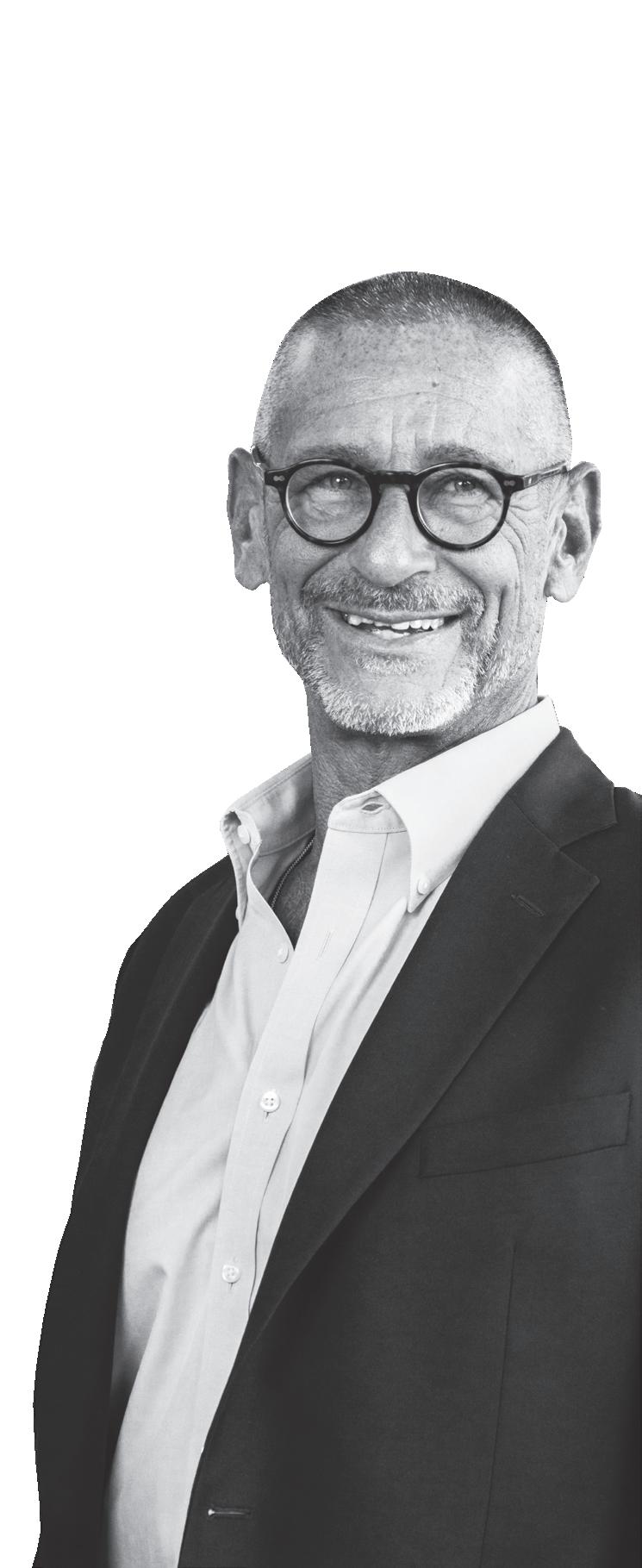
Whether it’s moms, men or grandmas, community members come together to forge connections and support Phoenix Children’s. These three groups are making a difference.

when love leads
Ten years ago, a group of friends—all grandmothers—joined together to support Phoenix Children’s. “WINGS stands for ‘When In Need Grandmas Serve,’” says MaryJo Grogan, the group’s president.
Today, they’re a powerhouse, 50 strong. Demonstrating the spirit of philanthropy for their grandchildren, they’ve raised more than $1.5 million for Phoenix Children’s.
recognizing sponsors of the wings 2 025 annual fundraiser
MIRACLE SPONSOR
Kathy Brown
DREAM SPONSORS
Alice Bazlen/Kim Cullum
Toni Loback
Kathy Pidgeon
Helene Presutti
Cindy Todare
Laurie Verderame
Gretchen Wilson
SPECIAL THANKS
Victoria & Rod Granberry
Spreading WINGS
To learn more about this generous group of grandmothers, go to GiveToPCH.org/WINGS.
wings has supported a wide range of initiatives at phoenix children ’ s :
$250k
Highly accurate pediatric mannequins, an expanded training facility and medical equipment for a simulation lab expansion
$250k
The Young Investigators Awards, a seed grant program that funds the work of up-and-coming researchers
$250k
New equipment and technology for the Motion Analysis Lab, which studies a child’s movement and muscle activities
$250k
Expansions to the Allergy & Immunology Clinic to enhance patient care and meet growing demand
$200k
A full-time facility dog, Checkers, who helps children meet goals in physical, occupational and speech therapy
$175k
Neurosurgery robotic technology, in partnership with the Phoenix Thunderbirds, to help make surgery more accurate and efficient for kids with epilepsy
breaking the silence
Two years ago, five women—all moms active in philanthropy—came together to support children’s mental health. “There was an epidemic happening, and emergency rooms were overwhelmed,” says Ashley Hawkins, a founding member of PCH Sage, an all-female philanthropic circle supporting behavioral health at Phoenix Children’s.
The numbers at Phoenix Children’s told a troubling story—at least seven children or teens visited the emergency department every day for self-harm or violent thoughts.
men on a mission
“We felt a calling,” Hawkins says. “We want to empower families to navigate these dark waters, and we believed partnering with Phoenix Children’s would make the greatest impact.”
PCH Sage draws its name from the wisdom of women and the hardy desert herb. In October 2024, the group welcomed 10 more members and has already raised $103,000. With a garden party fundraiser underway, they aim to

raise at least $500,000 through signature events in the next five years. The Sage Secret Garden Soiree takes place December 7 at the Royal Palms Resort.
PCH50 is a group of 50 community leaders who are raising funds for targeted needs at Phoenix Children’s.
“We share the intimate stories as to why and how we are selecting these causes,” says Chris Hanrahan, a PCH50 member and managing partner at Chevelon Capital Management
Since 2017, PCH50 has raised more than $7.2 million for programs and equipment, including:
• Phoenix Children’s ambulance: Emergency transportation designed with young patients in mind
• Da Vinci robotic surgical system: Cutting-edge equipment that elevates the hospital’s reputation as a pediatric surgical leader
• Behavioral Emergency Response Team (BERT): Trained professionals who defuse situations when children in crisis may act violently
“This year, we’ve set a goal to raise over $2.5 million through our four events,” says Kory Leadon, president of PCH50 and senior lead advisor at Brighton Jones. Those events include Off The Record, an intimate country music concert, as well as the PCH50 Pickleball Championships and the Half Round Showdown golf tournament. They also partner on the annual car show, Concours in the Hills.

To learn more about our giving groups, visit GiveToPCH.org/ giving-groups
A cutting-edge procedure gave Jacob something priceless: the possibility of becoming a dad one day.
Jacob was only 7 years old when he was diagnosed with rhabdomyosarcoma, an aggressive cancer of the body’s soft tissues. Among the many thoughts racing through his parents’ minds, the question of whether he might become a father one day wasn’t one of them. They had their hands full caring for him and his twin sister, Ella.
Jacob’s diagnosis started with a routine dental exam that revealed an unknown growth. At first, it seemed like a formality to get the growth removed and biopsied—but the results uncovered Jacob’s life-threatening diagnosis.
Jacob’s original treatment plan called for surgery and chemotherapy, but tests showed the cancer wasn’t fully removed. Jacob would need additional cycles of chemotherapy and also radiation—his best chance of survival but with a high risk of infertility.

Along with the testicular tissue cryopreservation option for boys who haven’t reached puberty, like Jacob, Phoenix Children’s offers:
• Egg cryopreservation: For girls who have reached puberty, eggs are removed, frozen and stored.
• Ovarian tissue cryopreservation: For girls not yet in puberty or at high risk, ovarian tissue containing immature eggs can be frozen.
• Sperm cryopreservation: For boys past puberty, sperm can be collected and banked to use in fertilization later.
“My mind was moving at a million miles a minute, and [his fertility] wasn’t even on our radar,” says his mom, Nicole.
That’s when his parents chose a fertility preservation technique called testicular tissue cryopreservation, an investigational procedure for boys who haven’t reached puberty. Tissue is removed from the testicles, frozen and stored for possible future use. Jacob was the first child at Phoenix Children’s to have the procedure.
The tissue processing for cryopreservation and three years of storage were covered by philanthropy. “We are incredibly grateful,” Nicole says. “It was a relief. Jacob has this preserved if he needs it. What a gift to have somebody say that your kid is worth having this opportunity in life.”
“What a gift to have somebody say that your kid is worth having this opportunity in life.”
— NICOLE, Jacob’s mom
Jacob is now 9, and the treatment he underwent is working. He continues to have regular scans to check for any signs that the cancer has come back.
“He loves children, and he’s great with babies,” Nicole says. “To some degree, he understood that this was really important.”
For Jacob’s family, fertility preservation wasn’t just a medical decision—it was about protecting possibility. Thanks to donors, it’s one less burden they carry, and one more chance for Jacob to live the full future he deserves.
Program coordinator Kathy Hinkle adds: “Without our generous donor community, fertility preservation wouldn’t be possible for kids like Jacob. You provide hope to families.”
John Nickens shares how he’s approaching this “transformational time.”
For John Nickens, Phoenix Children’s isn’t just a hospital—it’s a community dedicated to healing and hope. As the organization’s new President and CEO, he’s spending his first months listening, learning and celebrating the people who make this mission possible. Here, Nickens offers his perspective on the opportunity to impact the health of an entire generation.


Pediatric care is so deeply personal. What keeps you grounded in the mission? I love listening to the teams who provide lifechanging care. They know best how to serve patients and families. I stay grounded by seeing care firsthand and watching patients tackle obstacles with courage and resilience. I like to visit rooms and ask, “How are we treating you?” and “How’s the food?” Teenagers especially give it to you straight!
You’ve lived in several places throughout your career. What are you most looking forward to about life in Phoenix? I moved here in August, when the temp hit 118 degrees! I’m certainly looking forward to the cooler months. But in my first few weeks, I discovered how engaging the people are and how rich the culture is! My wife, Marye, and I plan to spend our weekends exploring this great state.
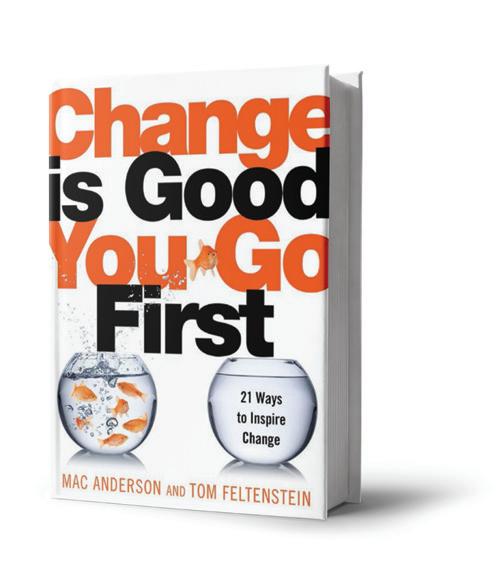
Innovation and growth have been key hallmarks of your career. How do you approach change?
There’s a funny book title: “Change is Good ... You Go First.” Change is hard, but I’ve learned to embrace it through small adjustments that maximize operations. Sustainable growth means making it easier for clinicians to practice medicine. My role is to engage caregivers in technology decisions so they spend more time with patients.
When you’re not working, any hobbies or interests that help you recharge?
and exploring new scenery. Marye and I love to read, travel and explore different cultures. I love to play golf even though I’m not very good at it.

As you begin your role, what message would you like to share with the community? Thank you for your generosity and belief in Phoenix Children’s. Every gift of time, talent or resources sends a powerful message that this community cares about kids. You can count on us to be good stewards and build on our strong position. Together, we’ll ensure a brighter, healthier future.

Genetic therapies are changing how we treat—and even prevent—diseases.
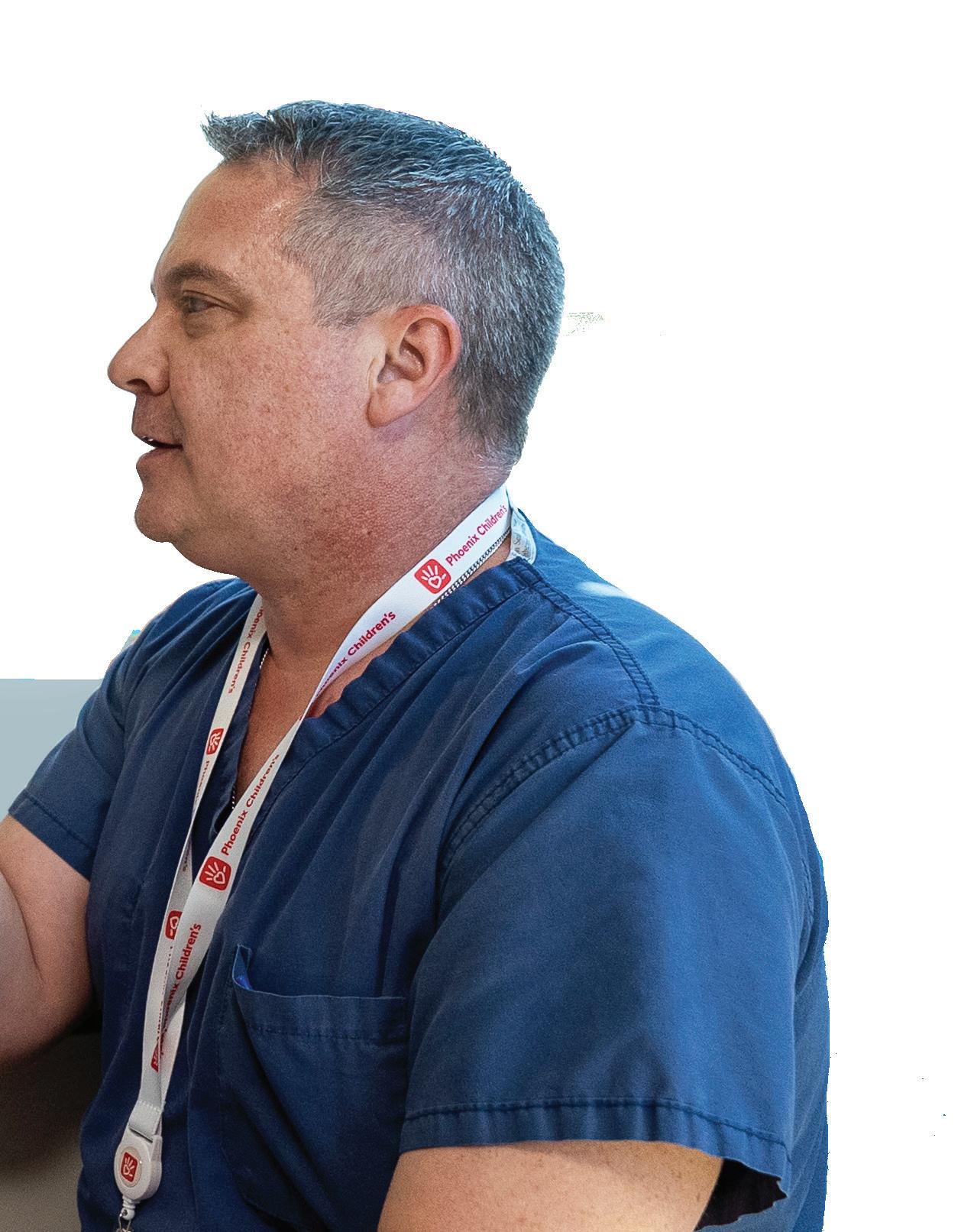
These doctors at Phoenix Children’s are at the forefront of a new era in medicine.
Phoenix Children’s is changing the story for kids—and rewriting what’s possible.
Life isn’t easy for a child born with Dravet syndrome—a rare and devastating form of epilepsy.
Many children with Dravet experience hundreds of seizures a day. Few will attend school. Most will never live independently, never drive a car nor attend college, never get a job nor create a family of their own. It’s a life of limits and obstacles—and in many cases, death.
This may be where the story starts. But thanks to the pioneering research taking place at Phoenix Children’s, it’s no longer where the story has to end. From Dravet to muscular dystrophy and more, doctors here are helping kids reclaim the futures they deserve.
Phoenix Children’s is currently leading or participating in multiple genetic therapy trials, each one focused on treating or even reversing a rare childhood condition. And behind each of those trials is a physician who is determined to do more—for patients, families and pediatric medicine.
Here’s a look at three of those doctors, and the lifechanging work they’re leading.
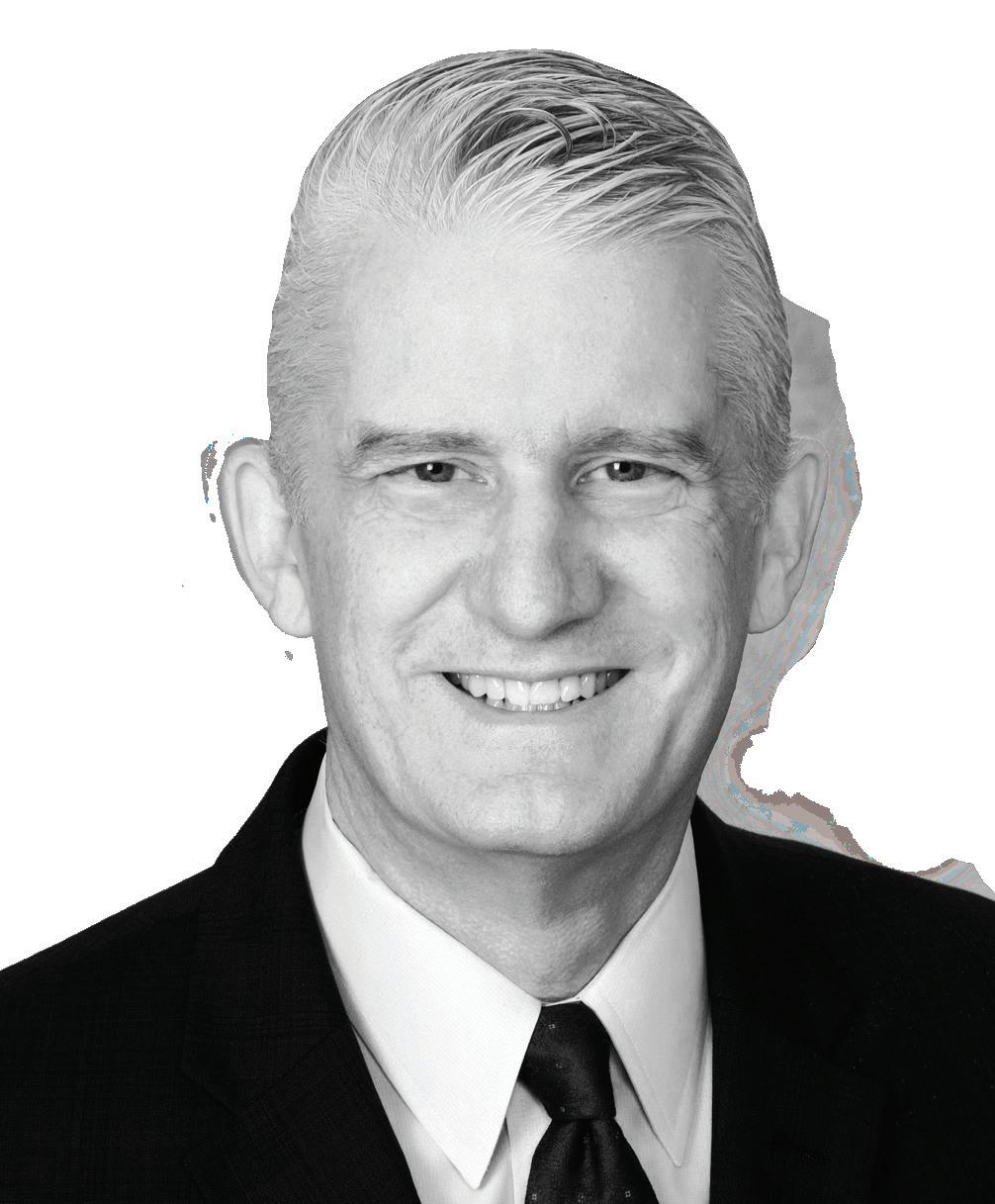
EPILEPSY: DR. ANGUS WILFONG
This new therapy doesn’t just manage seizures—it targets the gene behind them.
Phoenix Children’s is one of 20 sites in the U.S. soon to conduct a trial of a first-in-the-world genetic therapy for epilepsy. This research focuses on one of the most devastating forms of the disease: Dravet syndrome.
Dravet is a genetic condition caused by a mutation in the SCN1A gene. Symptoms appear in the first year of a child’s life, and the condition is highly resistant to medication. It also carries the highest mortality rate of all forms of epilepsy.
That’s why Dr. Angus Wilfong— division chief of neurology and the Dr. Jerry Cox Endowed Chair in Neurology—is so eager to get this trial off the ground.
“There are hundreds of different genetic forms of epilepsy,” he says.
Dr.
Wilfong is transforming care for children with catastrophic seizure
disorders.
“Genetic therapies aren’t just treating the symptoms of disease— they’re getting at the underlying cause of disease. If successful, this therapy will completely change the future for children with Dravet.”
“And there’s active gene discovery work to see if we can treat those other forms. But Dravet is the one that makes the most sense because it’s one of the most catastrophic and deadly forms of epilepsy.”
Here’s how the therapy works: SCN1A is known as an autosomal dominant gene, meaning a child typically has one normal copy of the gene and one mutated copy. The problem is that the normal gene copy can’t produce enough sodium channels by itself for proper brain signaling, leading to frequent, uncontrollable seizures.
This trial won’t replace the faulty gene—SCN1A is too large to replace—but it will use synthetic genetic material called antisense oligonucleotides (ASOs) to amplify the healthy gene’s protein production. In other words, the therapy helps the body produce more of what it needs, even if one gene copy is damaged.
Phoenix Children’s has identified 20 eligible patients to participate in this yearlong trial, which will include three to four ASO treatments delivered through a spinal tap, or lumbar puncture.
“Genetic therapies aren’t just treating the symptoms of disease— they’re getting at the underlying cause of disease,” Dr. Wilfong says. “If successful, this therapy will completely change the future for children with Dravet.
“Anyone can follow medicine,” he adds. “But it’s exciting and important for Phoenix Children’s to be leading medicine—and having others follow because we’re making new discoveries that haven’t existed before.”
Genetic therapy is a medical approach that aims to treat or even prevent disease by correcting problems at the gene level. These cutting-edge techniques may replace faulty genes, silence harmful ones or help the body make more of a missing protein. Unlike traditional treatments that manage symptoms, genetic therapy targets the root cause of illness. Major types include:
• Gene transfer therapy: Introducing a new gene to replace or supplement a faulty one.
• Gene silencing: Blocking the activity of a malfunctioning gene, often using antisense oligonucleotides (ASOs).
• Cell-based therapy: Using healthy donor cells— sometimes modified—to deliver therapeutic effects.
• Gene expression enhancement: Boosting the output of healthy genes.
Phoenix Children’s is one of only a handful of pediatric institutions nationwide conducting clinical trials in this emerging field. While still in its early stages, genetic therapy holds the potential to transform how we treat everything from epilepsy to muscular disorders and beyond.
Stewart Goldman, MD, senior vice president of research and chair of the Department of Child Health at Phoenix Children’s, says the promise of genetic therapy is profound—but so is the responsibility.
“This is a really important step for the health of children and society,” he says. “But it’s our moral and ethical responsibility to make sure that we do no harm—to make sure that we improve not just the length but the quality of patients’ and families’ lives.”
Dr. Goldman is focused on ensuring that the work never loses sight of the people at its heart. “I want Phoenix Children’s to not only participate but lead,” he says, “yet to do so in a way that never loses sight of the short- and long-term risks.”

To learn how you can help accelerate advancements in gene therapy, please contact Jana Earnest, senior philanthropy officer at Phoenix Children’s Foundation, at 602-933-1857 or jearnest@phoenixchildrens.com
DR. MICHAEL KRUER
A bold new approach silences the genes behind rare brain disorders—offering real hope for patients once out of options.
Thanks to a $750,000 grant from the Arizona Biomedical Research Centre, Michael Kruer, MD, is tackling neurodevelopmental disorders (NDDs) in innovative ways.
A pediatric neurologist and human geneticist, Dr. Kruer serves as the director of Neuroscience Research at Barrow Neurological Institute at Phoenix Children’s. As part of a three-year collaborative project with the n-Lorem Foundation and Columbia University, the team is developing first-inkind antisense oligonucleotides (ASOs)— modified DNA-like molecules—to silence faulty genes behind NDDs such as autism, cerebral palsy and intellectual disability.
“Imagine if we had something that could not just ‘band-aid’ symptoms, but actually counteract what goes wrong at the core of an NDD? It’s remarkable to even consider,” Kruer says. The potential benefits from ASOs are significant: improvements in language, physical abilities, social interaction, seizure control and cognitive ability—things never before possible.
Our genomes serve as a recipe book for how our bodies grow and function, written in the DNA code. Many NDDs stem from single-gene mutations, though different genes can lead to an NDD.
“When we can identify the genetic cause for a disorder, then we can act at the gene level to try to reverse it,” Kruer says. “This work is painstaking. It takes tremendous effort. But we have opportunities now that we’ve never had before.”
Most conditions result from de novo mutations—genetic errors that appear in the affected child for the first time, rather than being inherited. These mutations often cause the gene to become abnormally active, derailing typical brain development.
“If we can identify the faulty gene—and
“When we can identify that there’s a specific single gene cause for a disorder, then we can act at the gene level to try to reverse that. This work is painstaking. It takes time. But we have opportunities now that we’ve never had before.”
confirm it is overactive—then we can design a specific ASO to knock it down to a normal level,” Kruer explains. The project represents a partnership between families, academia and n-Lorem to custom design ASOs for select NDD patients at Phoenix Children’s who share specific gene mutations.
The team hopes that successes with these “pioneer patients” will feed forward so ASOs can be offered to many more patients at Phoenix Children’s—and beyond.
Kruer’s team benefits from the expertise of n-Lorem and a unique FDA regulatory pathway designed to allow the treatment of individual patients with ASOs. Using this approach, ASOs are being developed for NDDs for the first time.
As Kruer summarizes: “Cutting-edge work like this is only possible with the amazing team we’ve assembled and support from granting agencies like the ABRC and generous donors. It is our great hope that success during these foundational stages will redefine how NDDs are treated.”
Dr. Kruer is silencing faulty genes to open doors for children with neurodevelopmental disorders.


What if heart cells could help heal muscle? A pioneering trial explores an uncharted path.
As part of his work at Barrow Neurological Institute at Phoenix Children’s, Saunder Bernes, MD, medical director of the Neuromuscular Program, has been involved with disease-modifying therapies for spinal muscle atrophy (SMA), a rare degenerative disorder of motor neurons. These therapies have not only changed clinical outcomes for patients, but they’ve also resulted in normal motor development with early treatment.
Now, Dr. Bernes is expanding his research to include Duchenne muscular dystrophy (DMD), a condition that causes muscle weakness and shrinking, triggering severe health issues such as immobility and trouble swallowing or breathing.
Affecting 1 in 3,500 to 5,000 boys, DMD is a progressive, genetic neuromuscular disorder caused by mutations to a gene that provides instructions for the body to make a protein called dystrophin. Symptoms appear around the age of 3. The average life span of a
Dr. Bernes is exploring bold new paths for children with devastating neuromuscular disease.
“The trial that we’re heavily involved in right now is a cell-based therapy,” Dr. Bernes says. “It’s extracting cardiac cells from human cadaver hearts and administering them through a vein in boys with DMD.”
patient with DMD is mid to late 20s; death is almost always from cardiac disease.
This is where Dr. Bernes’ current research comes into play.
“The trial that we’re heavily involved in right now is a cell-based therapy,” Dr. Bernes says. “It’s extracting cardiac cells from human cadaver hearts and administering them through a vein in boys with DMD.”
HOPE-3 is a Phase 3 trial—a late-stage study that tests whether a treatment is effective and safe in a larger patient group—in which participants are randomly assigned to receive either the cardiac cells or a placebo for a year. Out of 45 patients nationwide, five are at Phoenix Children’s under the care of Dr. Bernes.
Dr. Bernes explains how it works: “Most people, when they talk about cell-based therapy, think that the cells you’re taking are being incorporated and reproduced. But that’s not the case here. There are cells in human hearts with different forms of micro-RNA. These micro-RNA forms are anti-inflammatory or antifibrotic. We infuse them into the circulation; in the lungs, the cells break apart and release a factor that’s distributed systemically. It’s almost like taking a drug, but the drug is actually cardiac cells from human hearts.”
This is an “add-on therapy” to other FDA-approved therapies. At Phoenix Children’s, 25 boys with DMD have received the FDA-approved gene-transfer therapy.
To qualify for the cell-based therapy trial, patients—ambulatory or not—must be between the ages of 10 and 18 and able to travel to the hospital every three months for a year for the intravenous infusions. Dr. Bernes notes that it can be overwhelming for participants.
But early data promises good news for patient outcomes.
“Data suggests that cardiac function is significantly improved. If we can improve that, we’re talking about changing the life of a boy who, 10 years ago, might have died before he was 20. I have to say, it’s so reassuring to tell a family that their child isn’t going to have significant cardiac disease.”
Endowed support drives new possibilities in children’s heart surgery, led by physicians like
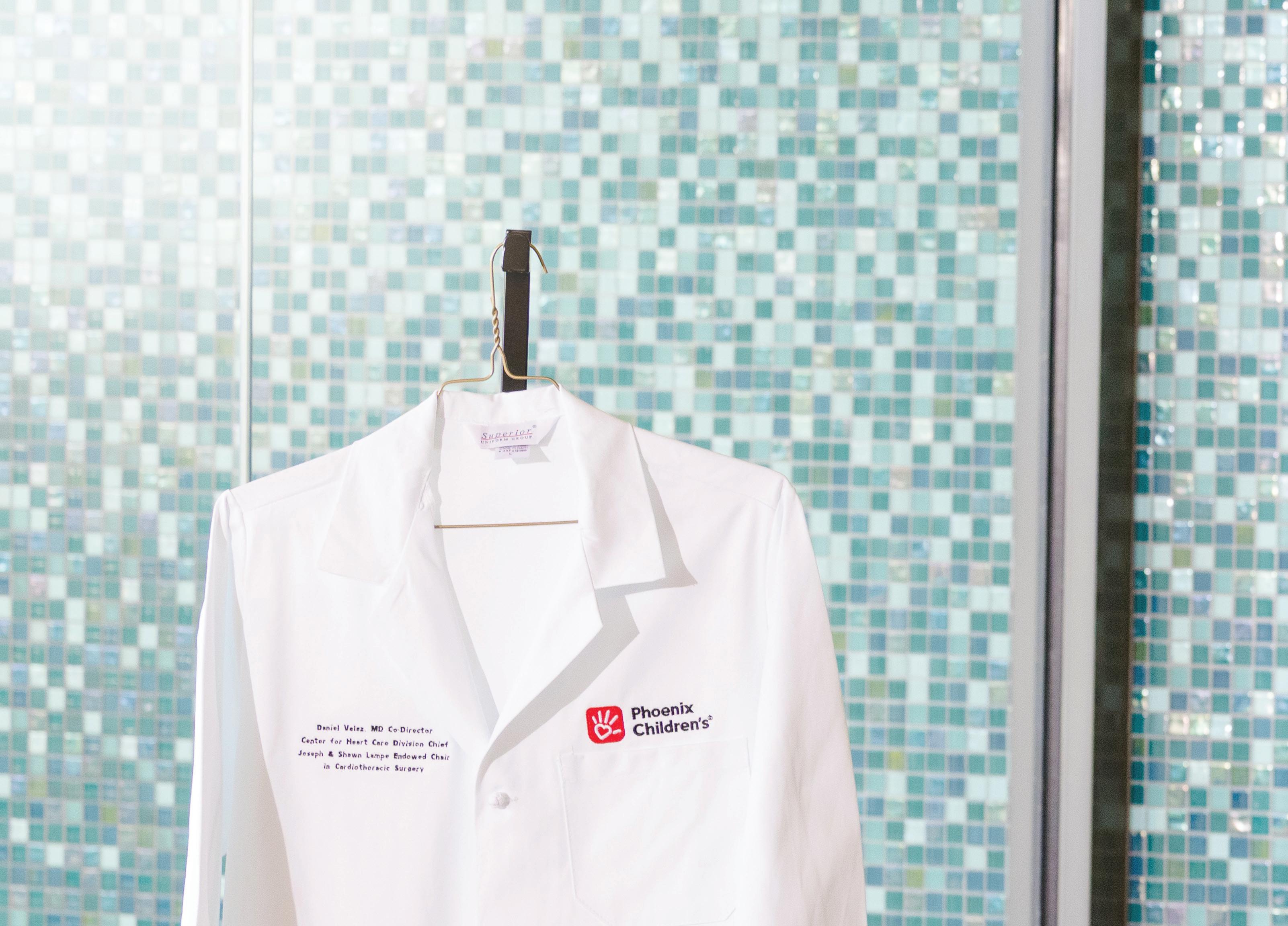
You can’t always predict a breakthrough. But you can help create the moments that lead to one. At Phoenix Children’s, endowments shape the future of pediatric care—starting today.

When Jerry Cox, a Phoenix-area dentist and artist, wanted to make a difference, he decided to endow a chair in neurology at Phoenix Children’s. “One of the things that I love about Phoenix Children’s is their ability to plant seeds,” he says. “They plant seeds of medical possibilities and watch the possibilities grow. They plant seeds of healing in the children.”
People choose to endow chairs or programs for various reasons—whether that’s paying forward their family’s personal experience, helping others facing the harsh realities of having a sick child or supporting a particular practitioner.
Cox says he chose to endow a chair in neurology because he knew that supporting research in treating epilepsy could make a big impact. “There are thousands and thousands of things you could invest in,” Cox says. “Some of those would tug at my heart, but there are a lot of things in medicine that affect one-
“Endowments are an enduring legacy. They make a perpetual impact—a difference for generation upon generation.”
— NICOLA LAWRENCE , Vice President of Individual Giving at Phoenix Children’s Foundation
tenth of 1% of the population or a smaller amount. I don’t want to invest in that when I can invest the same amount of money to help 1,000 people or 100,000 people.”
And why did Cox decide to support Phoenix Children’s?
“I really love that with Phoenix Children’s, it’s not just curing the disease in the child,” he says. “It’s treating the children, the mothers, the family—all of that. It’s the treatment of the heart of the patient and the family.”
Endowed chairs are one of the most meaningful ways a donor can create lasting impact, helping recruit and retain world-class talent while fueling innovation in care and research. Angus A. Wilfong, MD, division chief of pediatric neurology at Phoenix Children’s and associate director

of Barrow Neurological Institute at Phoenix Children’s, is the recipient of Cox’s endowed chair. He says Cox’s gift has been transformative.
“It is so important to advancing our understanding and care of children living with epilepsy and their families,” Dr. Wilfong says. “We’re right at the cusp of making dramatic changes.” He points to the development of laser surgery for epilepsy, which can completely eliminate seizures in some children.
“Instead of spending several days or even a week in the hospital after a major brain surgery, children with the laser [treatment] go home the next morning,” he says.
Dr. Wilfong and his team are also testing gene therapy for epilepsy (see page 12). “This is the first time that we can completely change the whole trajectory of a
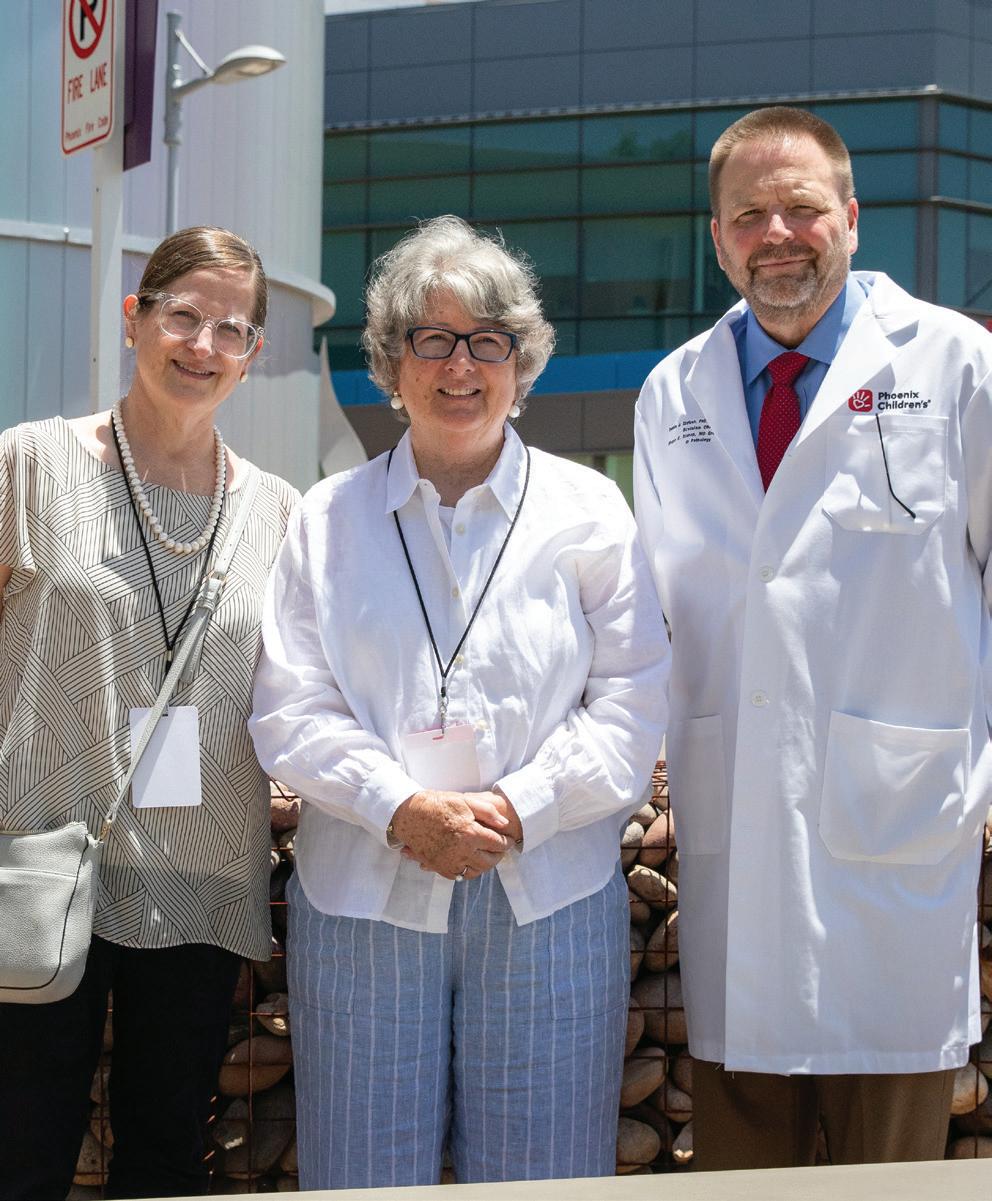
child’s life by correcting a gene that is causing the epilepsy. It’s such an exciting time,” he says.
The breakthroughs these endowments make possible don’t happen overnight—but every moment of research and innovation gets us closer to a better future for kids.
Here are just a few of the endowed chair holders at Phoenix Children’s.



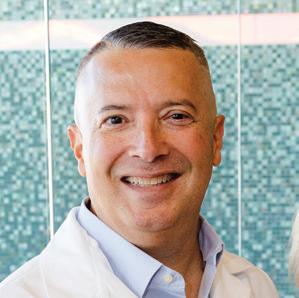

“Endowments are an enduring legacy,” says Nicola Lawrence, vice president of individual giving at Phoenix Children’s. “They make a perpetual impact—a difference for generation upon generation.”
She compares it to saving for your retirement. “You’re putting the money away so that it distributes during time when perhaps the revenue isn’t as easy to access,” Lawrence says.
If you choose to make an endowment, you have two options: You can fund an endowed chair or an endowed program—each with long-lasting impact:
• When you endow a program, you provide revenue for that type of medical service.
• When you endow a chair, you give whoever holds that position latitude on how to use it. They might spend the money on research, equipment or funding fellowships.
Endowed chairs have another benefit, on top of the funding they provide to a specific program or practitioner—they’re important for attracting top talent.
“Leading clinical researchers look for opportunities to test their concepts that will provide new technologies and better outcomes for children,” Lawrence says. “Funded endowed chairs allow us to attract those physicians, and our patients ultimately benefit from
If you’re interested in learning more about making an endowment and how your gift could benefit Phoenix Children’s, please contact Nicola Lawrence, vice president of individual giving, at 602-933-3870 or nlawrence@ phoenixchildrens.com.

Phoenix Children’s leadership determines how endowed chairs are established, based on planned initiatives. Endowments that are currently available include:
• Osteogenesis Imperfecta Endowed Chair: $2 million to support access to care for children with rare orthopedic conditions.


• Translational Research Endowed Chair: $2 million to fund research into effective cancer treatments with fewer side effects.
• Research Institute Endowed Chair: $2 million to expand research into new treatments for a range of disorders.
• Otolaryngology, Head and Neck Surgery Endowed Chair: $2 million to expand advanced care and treatment for children with challenging ear, nose and throat conditions.
• Cleft and Craniofacial Endowed Chair: $2 million to support life-changing care for children with cleft palates or other facial conditions that require treatment.
ANYWHERE
Certified teachers bring one-on-one instruction to the bedside or classroom. With books, supplies and computers, kids feel like students—not just patients.

The program gives kids identity and purpose, even on hard days. The team ensures smooth transitions back to school—because learning, like healing, can’t be put on hold.
1 Darn Cool School provided over 11,400 patient education sessions across all campuses in 2024— helping kids with everything from doing math homework to staying connected to their schools.
“School is normal for kids,” says teacher Virginia Trimble. “One of the parts of healing is to have that normalcy.” The program helps kids keep up with school during extended stays, lowering anxiety and supporting both mental and physical health.
Hospital
stays interrupt a lot of
things—but thanks to 1 Darn Cool School, kids don’t have to miss the moments that shape who they are.
When kids are hospitalized, they miss more than class—they miss the routines, friendships and confidence-building moments school provides. At Phoenix Children’s, 1 Darn Cool School restores that normalcy by bringing accredited K–12 education into the hospital. Funded by Desert Financial Credit Union and Desert Financial Foundation, the school ensures kids keep growing, learning and feeling like themselves.
Recent and upcoming events supporting Phoenix Children’s patients and their families.

Step Up. Stop Cancer.
September 2025
Phoenix Children’s annual Step Up. Stop Cancer. campaign raised funds for the Center for Cancer and Blood Disorders during Childhood Cancer Awareness Month. The Diamondbacks recognized patients from the center at one of their home games.
UPCOMING EVENTS
SPOOKTACULAR
SPRINT & 5K
October 25, 2025
Join over 5,000 fitness enthusiasts and families in downtown Phoenix for a Halloween-themed 5K benefiting Phoenix Children’s. Spooktacular is presented by AutoNation. PhoenixChildrens5K.org
IGNITE HOPE
Give-A-Thon Aug. 18-22, 2025
The 2025 KTAR News and Arizona Sports Give-A-Thon, presented by Valley Hyundai Dealers and Yrefy, raised $2.45 million in its 17th year.

December 13, 2025
This holiday tradition raises funds for Phoenix Children’s while showing patients and their families they’re not alone during the holidays. Ignite Hope is presented by Angry Crab Shack. PCHIgniteHope.org
CONCOURS IN THE HILLS
February 14, 2026
This one-of-a-kind car show features great cars, food and music in the spectacular setting of Fountain Park. ConcoursInTheHills.com
TEAM TAYLOR
FAMILY FUN RUN
April 26, 2026
Honor families affected by SUID while supporting Phoenix Children’s Home Safety and Safe Sleep Program.
TeamTaylor5k.com
PHOENIX CHILDREN’S HOSPITAL FOUNDATION
2929 E. Camelback Road, Suite 122 Phoenix, AZ 85016
